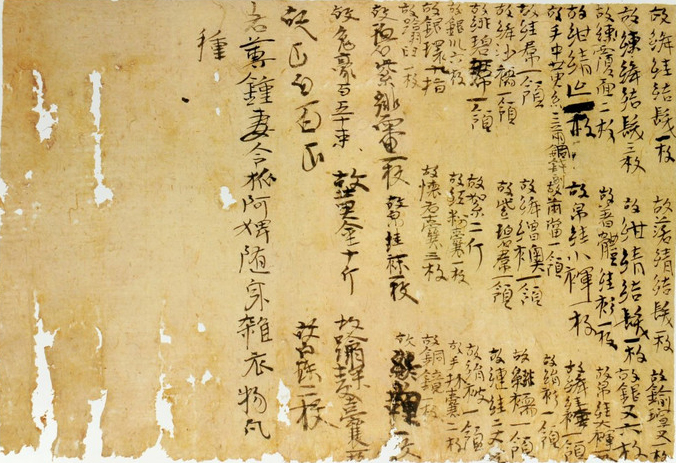Unearthed manuscripts promote Turpan studies

The constant excavation of Turpan manuscripts in recent years has promoted Turpan studies. These documents greatly complement the Dunhuang manuscripts, which lack secular records.
Turpan Manuscript Collection: Confucius Volume was published in January 2017. The collection will have 20 volumes, consisting of more than 20 million words, including revisions and annotated Turpan manuscripts from all over the world, which will provide references for historical cultural studies of the Western Regions.
Rich history
Unearthed manuscripts from the Turpan area were the primary resources used to research historical, linguistic and cultural exchanges. Currently, unearthed manuscripts from the Turpan regions in Xinjiang Autonomous Region include official dispatches, files, household registrations and field accounts of varying periods of time ranging some 600 years from the Former Liang (320-376), West Liang (400-421), North Liang (397-460), Gaochang (460-640) and the Tang Dynasty (618-907). Contractual bonds of civil tenancy, debit and credit, and trade, as well as classics of Confucianism, Taoism and Buddhism were also included.
These Turpan materials are even richer in contents than the famed Dunhuang manuscripts. Wang Qitao, chief editor of the newly published book and Dean of the Institute of Dunhuang Turpan Manuscript Research at the Southwest University for Nationalities, said Turpan is a city of historical importance. He pointed out that it was formerly the Gaochang Prefecture and Gaochang Kingdom. The area was home to famous military and political institutions, such as the Anxi Frontier Command and Xizhou military prefecture.
Due to Turpan’s significance in the fields of politics, military, economics, culture, transportation and religion, many secular manuscripts have been excavated, complementing the Dunhuang manuscripts, which lack secular documents of the Northern, Sui and Tang dynasties. Li Xiao, a professor from the School of Chinese Classics at Renmin University of China, said Turpan manuscripts were mostly obtained by archaeological excavation of tombs and relics. These excavations yielded rich secular documents, compensating for the lack of relative information in the official historical records. Li said, for example, that the newly unearthed Tang calendar confirmed that people in the Tang Dynasty carried out social activities, such as funerals and wedding ceremonies, according to the national calendar.
Joint efforts
Turpan manuscripts continue to be unearthed. Li said every batch of excavated documents will promote Turpan research. In history, many language expressions and customs in Turpan areas differed from those of the central China. Unearthed manuscripts are fragmented. These adverse factors have complicated related research. But due to the advancement of digital technologies, Turpan manuscripts all over the world were published in huge amounts. The development of retrieval tools also facilitated the collation and compilation of documents, promoting research quality and the share of research results.
Categorizing these manuscripts is an important and difficult task. Zhu Lei, a history professor from Wuhan University, pointed out that Tang Changru, former dean of the Institute of Ancient Literature at the State Administration of Cultural Relics, led his team to classify tombs and assisted in the collation of Turpan manuscripts. In recent years, the constant excavations of Turpan materials and manuscripts have broadened the research field, which requires scholars to research beyond manuscripts and focus more on the real historical conditions.
Wang assumed that in the past, Turpan manuscripts in different regions and countries were organized by various methods and standards, and that literary and linguistic scholars were usually absent, so secular words, phrases and terms in the manuscripts were not systematically recognized, reducing the precision of research. In literary and historical research, archaeology, linguistics and history are intertwined and must be researched together, Wang argued. Only through joint efforts in the three fields can the organization, research and inheritance of Turpan manuscripts be accomplished, he added.
For historical reasons, Turpan manuscripts are also preserved in places outside China, including Japan, Germany, Russia, Turkey and the United States. Wang said these countries are also organizers and researchers in the field with whom the Chinese scholars ought to cooperate in order to further their work.

 PRINT
PRINT CLOSE
CLOSE